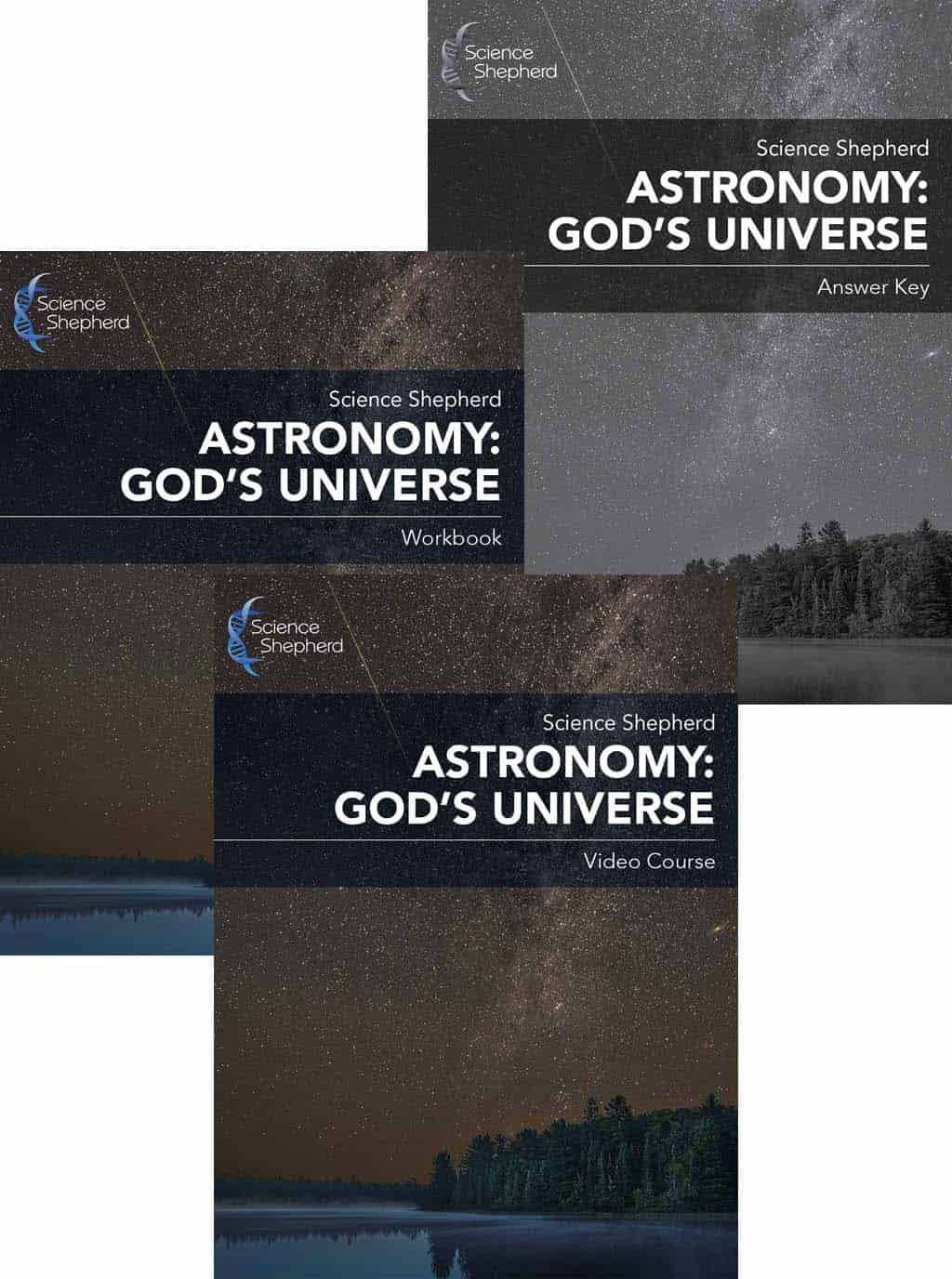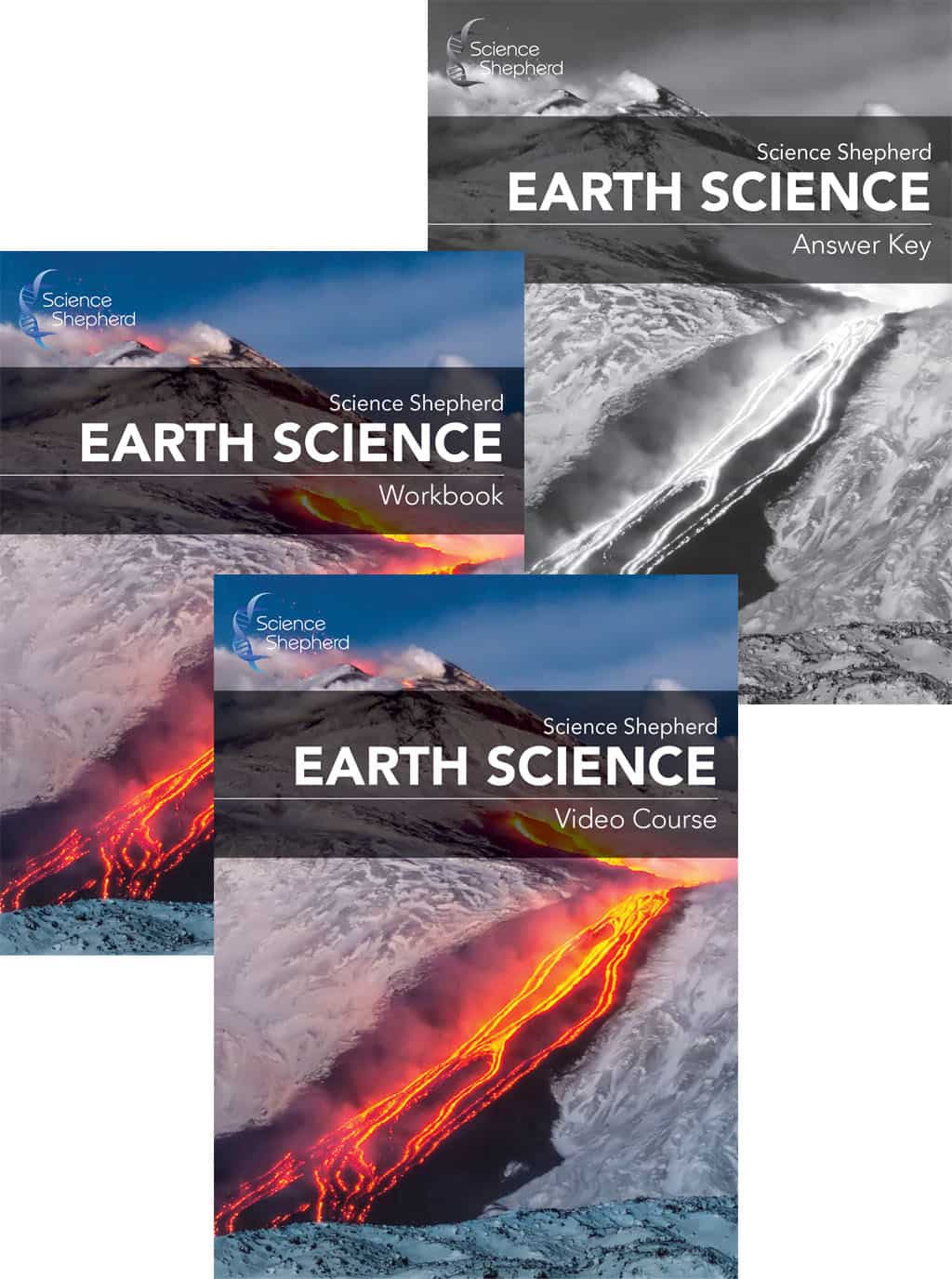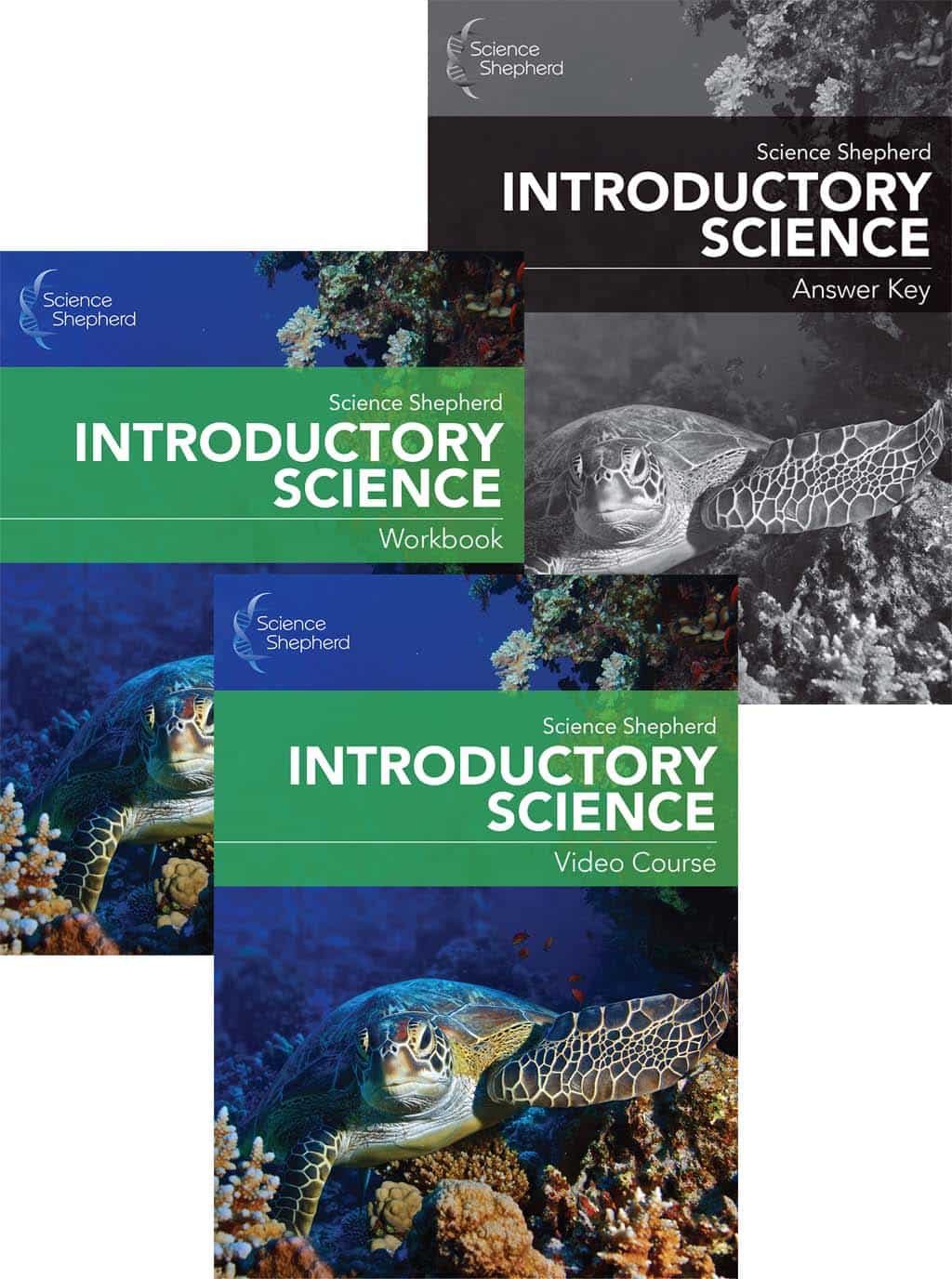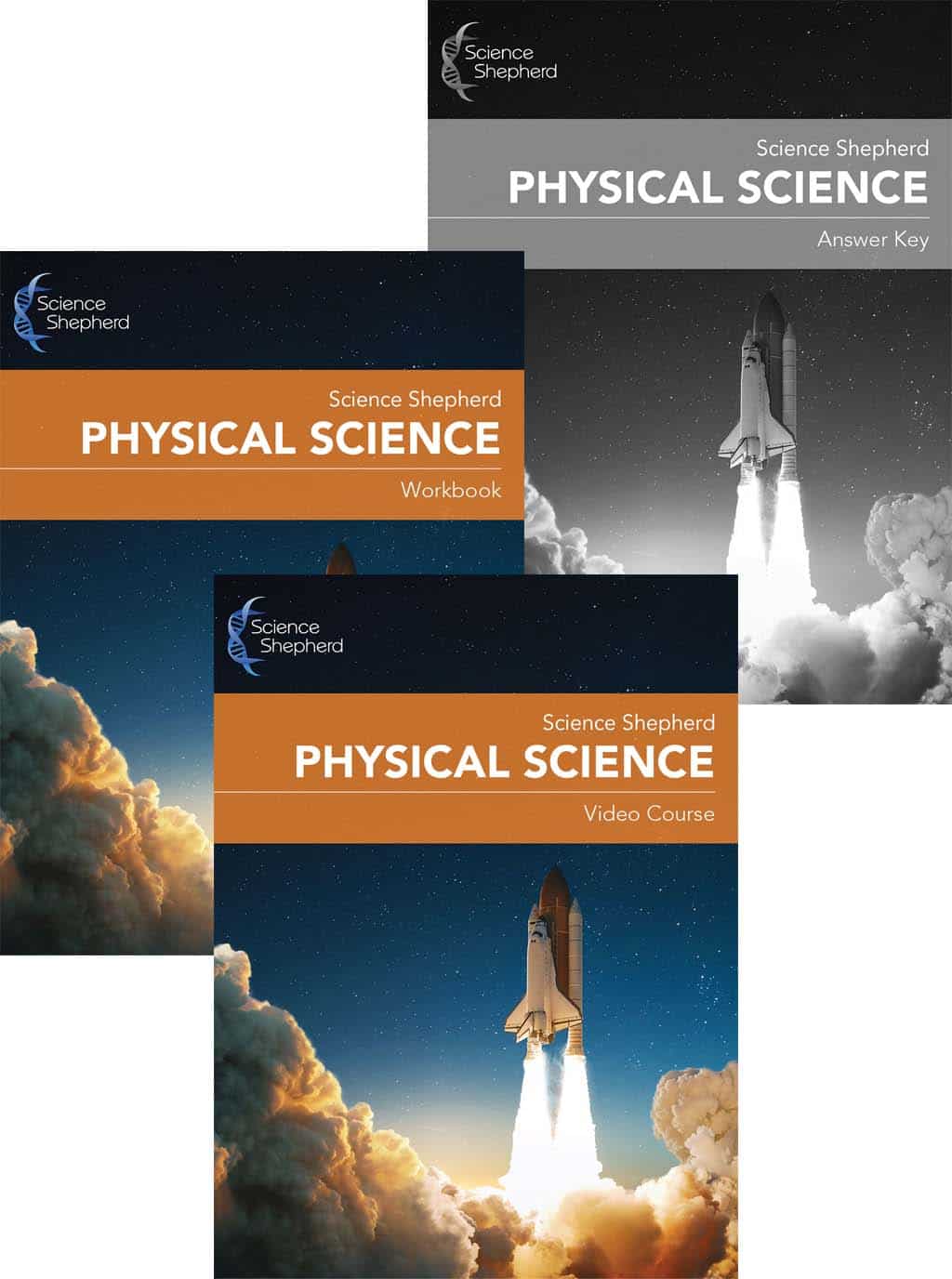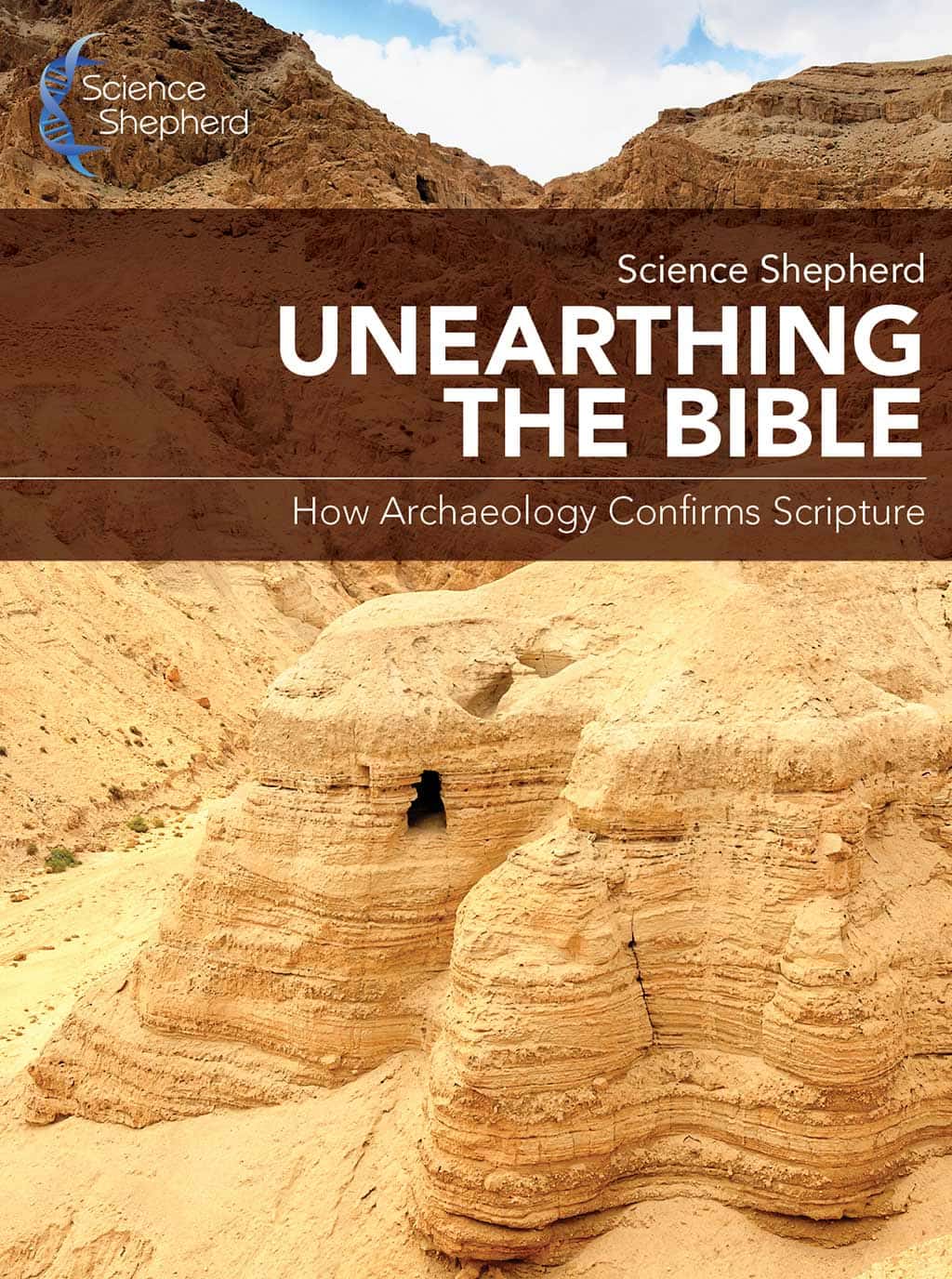-
New users: After you place your order you will receive a registration email with a link to create your password to access your online course(s). Once your password is created, you will be able to access your course(s) from the “My Courses” link at the top of any page at scienceshepherd.com, or by visiting courses.scienceshepherd.com.
Existing users: After completing your purchase your video course(s) will be automatically added to your account. You'll receive a registration email as soon as the course(s) has/have been added to your account.
Please note: It may take up to 15 minutes to receive your registration email. Be sure to check your spam and promotions folder. -
eBooks: After you complete your purchase we must manually create an eBook account for you (yes, sadly some things are still manual in the digital age). Once your eBook account is ready you will receive an email with your username and password. Please allow up to 2 business days for eBook orders to be processed. All eBooks must be accessed via https://dashboard.shelfit.com, or through the RedShelf App available for Android and iOS.
PDFs: A PDF download link is included on your order confirmation page and with your order confirmation email. Please note: PDF files may be opened only two (2) times via the provided download link, so be sure to save each PDF to your device right away for future access.
-
It may take up to 15 minutes after you complete a purchase to receive your course registration emaiI with login instructions. If it has been more than 15 minutes, it is possible your registration email went to spam. If you did not receive this email, you can simply click on the "My Courses" link at the top of the page and use the "Forgot Password" link to set a new password.
Please note: If you have previously set up a Science Shepherd account your new course will be automatically added to your existing account and you will not receive a new registration email. -
For fastest order processing, orders should be placed online. If you would like to place an order by phone, please send us an email with your phone number, and we will contact you.
-
We accept MasterCard, Visa, American Express, Discover, Google Pay, and Apple Pay.
If you would like to pay with a PO, please contact us.
-
You can review our shipping policy here.
-
You can review our return policy here.
-
You can review our terms of use here.
Orders
-
Level A of Astronomy: God's Universe includes 60+ video lessons. Level B contains those same lessons, plus over 25 additional lessons. So, Level B is a longer course than Level A. These additional lessons provide more advanced study in the areas of dark matter, dark energy, relativity and more. In addition, the Level B Workbook is more challenging than the Level A Workbook.
-
No, Astronomy: God's Universe does not have any tests or quizzes. If you would like a cumulative review of material for your student(s), we recommend using the crossword puzzles in the workbooks, which review material from several recent classes.
Astronomy: God's Universe
-
We recommend Biology for 9th – 12th grade. You can read more about our recommended course progression here.
-
The 3rd Edition, Revised of Biology includes almost exclusively updates to the graphics. There are a few minor rewrites for clarity, but otherwise the text remains unchanged from the 3rd Edition. The textbook is softcover, rather than hardcover.
-
The major changes are that Chapter 21 was nearly completely rewritten, as were significant portions of Chapters 26, 28 and 29. Throughout the text, graphics were updated and terms aligned with the changes reflected in Chapters 21, 26, 28 and 29. Of course, updates include new chapter and test questions to reflect the changed content, as well as appropriate updates to the Parent Companion material.
-
The book remains 34 chapters. Other than a couple of graphics, the only thing that will be different are the creation and evolution chapters, 17, 18 and 19. All three have been totally rewritten. They are now a little longer with 100% new pictures and illustrations, but I think the common themes running through all three make them flow very well and I do not believe that the extra length is going to be a huge problem for folks. The common theme is that we can see that science reflects the Bible as the authoritative Word of God because when we objectively measure the scientific evidence with the creation model and evolution model, the evidence fully supports creation and often contradicts, or is incompatible with, predictions of the evolution model. I continue to keep the philosophical discussions of creation and evolution in the three salient chapters, and the rest of the text continues to teach the science as the science. Chapter 17 describes the creation model and basic scientific tenets, 18 the evolution model with its tenets (notably including the fact that evolution was never meant to be compatible with a creation origins theory) and 19 directly compares how various scientific data fit into each one. The three chapters are much more scientifically rigorous than the first edition and, again, I have written them very straightforwardly with a focus on conceptual flow of ideas so that by the time the students are done, they will definitely understand complex and fundamentally scientific arguments supporting the creation model while simultaneously troubling the evolution one. New material includes a fairly in depth analysis of intelligent design, information theory, genetics and totally new fossil and radiodating concepts. Also, the fact that natural selection and genetic mutation cannot “do” what the evolution model says it can – and needs it to – “do” is fully fleshed out as one of the major scientific flaws of the evolution model.
-
This is a somewhat difficult question to answer with 100% accuracy since there is no specifically defined “AP®” or “CLEP®” approved program; rather, in the case of the AP® program, the company provides a syllabus around which a teacher designs their specific AP program. When I review that syllabus (many different AP syllabi are on the web and you will find them by typing “AP biology syllabus” into a search engine, or the recommended AP® content http://apcentral.collegeboard.com/apc/public/repository/ap-biology-course-description.pdf ), I find that our program covers 100% of what the AP® syllabus recommends be covered (as well as all of the recommended topics students should learn for the CLEP® http://www.collegeboard.com/student/testing/clep/ex_bio.html), with the exception of in-depth treatment of evolutionary concepts. Noteworthy is that when I developed our program, I had 10 high school, including Campbell’s and Miller-Levine (“The Lion Book”) and 1 introductory college texts with which to gauge ours, and I developed ours to specifically contain as much in depth, but none of the distracting side-bar, material as the most comprehensive of the texts. So, in that regard, I believe that our Biology covers a significant portion, if not all, of the non-evolutionary topics upon which the AP® and CLEP® tests measure the students (again, with the exception of evolutionary concepts). Science Shepherd Biology covers some of the evolutionary tenets, but not in as great detail as the evolutionary based texts and so your student would need supplementary material in that regard. I should also note that the AP® program focuses extensively on students not memorizing facts, but learning about biological principles and how they interrelate. That concept is one of the driving forces behind how I designed the material presentation and wrote the end-of-chapter and test questions. There are no fact memorization processes in our program. I want the student to learn Biology, not to regurgitate stuff without any knowledge as to why they know what they know. In that regard, both the AP® concept and our programs share a common thread.
-
The short answer is that the materials included with the video series can stand alone, but the optimal learning experience will not be attained without the textbook; however, there are nuances to that answer that deserve explaining. I have no doubt that if the video alone is utilized, your student will receive a most excellent learning experience, equal to/better than that of the other video-only based high school biology programs out there. The nuance in the answer is that it depends upon what you and your student’s goal is for learning biology. If the goal is to ensure a solid experience for someone who struggles with science and isn’t going to pursue too much further learning in the biological sciences, then the video only approach will absolutely achieve that goal. On the other hand, if the student is highly interested in biological science and/or wants to pursue it further after this class, then, while the video itself is “complete” in that all of the material in the text is presented in the video, the video alone will not provide adequate ability for the student or teacher to assess the completeness of understanding of the material. I think the ideal way to learn this material is to both read and hear it (students who are challenged with text-based learning often do quite well with the text after watching the information first presented visually), with the text ultimately serving as a ready reference should a question arise (in which case trying to find the relevant material on one of more than 130 video clips amassed over more than 40 hours of video will be quite challenging). In addition, the end of chapter questions in the book are designed to test complete mastery of the subject matter (and they are ideally set up for both text-based learners and auditory learners) since they are true-false and short answer questions. This is, by far, the most thorough way to assess your student’s understanding of the material (as opposed to multiple choice or fill in the blank). If the video series is used alone, this valuable knowledge testing resource will be lost. Now, it is true that I have developed multiple choice questions that are integrated into the video series and learning platform but, again, they are really designed as a supplement for, rather than a substitute of, the questions in the text itself.
-
The Q&A DVD is a comprehensive explanation of every study question from the textbook, with video, audio and illustrations used to drive the answers and concepts home.
Please note: Questions and answers for chapters 17-19 of the DVD are for the 1st edition textbook only, but all other chapter questions and answers will correspond to the 1st, 2nd and 3rd editions.
-
In order for the student to get the most out of the course, we encourage students to perform the labs at home. A student may choose to perform the labs at home while following along with the instructor on DVD, or do the labs independently and simply refer to the DVD before or after performing the labs at home. However, we realize this is not always financially or logistically possible. Therefore, since the DVD is a comprehensive presentation of all lab steps and findings, if the student follows the DVD diligently, completes all written portions in the lab book and completes the write ups, then the student will have completed all of the salient features of the laboratory experience.
-
- Record Keeping: Notebooks & Reports
- Diffusion-Osmosis
- General Cell Structure in Animals
- Reproduction: Cellular
- Protista: The Protozoans
- Cell Structure: Plant
- Leaf Structures The Cell Interior and Function
- Root Structure
- Reproduction: Pollen Germination
- Dissection: Clam
- Dissection: Earthworm
- Dissection: Grasshopper
- Dissection: Fish
- Dissection: Fetal Pig
- Classification of Animals I
- Classification of Animals II (Lab Manual only)
- Nervous System: Reaction Time
- Muscular System: Fatigue
- Population Succession Study
-
An optional lab kit containing the supplies used in our labs is available for purchase separately. A microscope and microscope case are also available for purchase. These are optional and may be purchased at Rainbow Resource Center.
Biology
Biology Labs
-
Level A of Earth Science includes 121 video lessons. Level B contains those same lessons, plus 40 additional lessons. So, Level B is a longer course than Level A. These additional lessons provide more advanced study in the areas of worldview, layers of the earth, lava, oceanography and more. In addition, the Level B Workbook is more challenging than the Level A Workbook.
Earth Science
-
The short answer is that the materials included with the video series can stand alone, but the optimal learning experience will not be attained without the textbook; however, there are nuances to that answer that deserve explaining. I have no doubt that if the video alone is utilized, your student will receive a most excellent learning experience, equal to/better than that of the other video-only based middle school life science programs out there. The nuance in the answer is that it depends upon what you and your student’s goal is for learning life science. If the goal is to ensure a solid experience for someone who struggles with science and isn’t going to pursue too much further learning in the biological sciences, then the video only approach will absolutely achieve that goal. On the other hand, if the student is highly interested in biological science and/or wants to pursue it further after this class, then, while the video itself is “complete” in that all of the material in the text is presented in the video, the video alone will not provide adequate ability for the student or teacher to assess the completeness of understanding of the material. I think the ideal way to learn this material is to both read and hear it (students who are challenged with text-based learning often do quite well with the text after watching the information first presented visually), with the text ultimately serving as a ready reference should a question arise (in which case trying to find the relevant material on one of more than 100 video clips amassed over more than 20 hours of video will be quite challenging). In addition, the end of chapter questions in the book are designed to test complete mastery of the subject matter (and they are ideally set up for both text-based learners and auditory learners) since they are true-false and short answer questions. This is, by far, the most thorough way to assess your student’s understanding of the material (as opposed to multiple choice or fill in the blank). If the video series is used alone, this valuable knowledge testing resource will be lost. Now, it is true that I have developed multiple choice questions that are integrated into the video series and learning platform but, again, they are really designed as a supplement for, rather than a substitute of, the questions in the text itself.
Fundamentals of Chemistry
-
Yes, the video course for Introductory Science is the same for both Workbook Level A and Level B. Only the Workbook content is different. There are more questions in Workbook Level B and they are written to be slightly more challenging.
Introductory Science
-
Life Science was designed for 6th to 8th grade, but would also be appropriate as a 9th grade introductory text. You can learn more about our recommended course progression here.
-
For the 2nd edition of Life Science, terminology has been updated to reflect current standards. Graphics have also been updated throughout the text. The scope and sequence remains mostly the same, but some slight changes have been made within certain chapters for better clarity and flow.
-
While the Life Science Video Course is based on the 2nd edition textbook, the changes from the 1st edition to 2nd edition are small enough that students should be able to use a 1st edition textbook with the Video Course without much confusion. In places where the Video Course and textbook differ, preference should be given to the Video Course.
Also, the recommended reading schedule that the Video Course follows is different from the one in the 1st edition Answer Key & Parent Companion in a few places. For continuity, students should follow the reading schedule of the Video Course.
-
The short answer is that the materials included with the video series can stand alone, but the optimal learning experience will not be attained without the textbook; however, there are nuances to that answer that deserve explaining. I have no doubt that if the video alone is utilized, your student will receive a most excellent learning experience, equal to/better than that of the other video-only based middle school life science programs out there. The nuance in the answer is that it depends upon what you and your student’s goal is for learning life science. If the goal is to ensure a solid experience for someone who struggles with science and isn’t going to pursue too much further learning in the biological sciences, then the video only approach will absolutely achieve that goal. On the other hand, if the student is highly interested in biological science and/or wants to pursue it further after this class, then, while the video itself is “complete” in that all of the material in the text is presented in the video, the video alone will not provide adequate ability for the student or teacher to assess the completeness of understanding of the material. I think the ideal way to learn this material is to both read and hear it (students who are challenged with text-based learning often do quite well with the text after watching the information first presented visually), with the text ultimately serving as a ready reference should a question arise (in which case trying to find the relevant material on one of more than 100 video clips amassed over more than 20 hours of video will be quite challenging). In addition, the end of chapter questions in the book are designed to test complete mastery of the subject matter (and they are ideally set up for both text-based learners and auditory learners) since they are true-false and short answer questions. This is, by far, the most thorough way to assess your student’s understanding of the material (as opposed to multiple choice or fill in the blank). If the video series is used alone, this valuable knowledge testing resource will be lost. Now, it is true that I have developed multiple choice questions that are integrated into the video series and learning platform but, again, they are really designed as a supplement for, rather than a substitute of, the questions in the text itself.
Life Science
-
Yes, the video course for Physical Science is the same for both Workbook Level A and Level B. Only the Workbook content is different. There are more questions in Workbook Level B and they are written to be slightly more challenging. Workbook Level B also has a bit of math.
Physical Science
-
For the online version of Unearthing the Bible: After logging into your account at courses.scienceshepherd.com and accessing the Unearthing the Bible video course, click on "Course Materials" in the left column to download the complete workbook and answer key.
For the Unearthing the Bible DVD set: A download link for the Unearthing the Bible workbook and answer key PDF is included on your order confirmation page and with your order confirmation email. Please note: PDF files may be opened only two (2) times via the provided download link, so be sure to save each PDF to your device right away for future access.
-
Yes, please see our co-op information for details.
Unearthing the Bible
-
Certain security settings prevent links to PDF files from working properly. If a sample link doesn’t work, right click on the link, then left click on “copy shortcut” or “copy link location” and paste into the address bar. If you are still having trouble, please contact us.
-
Please visit our Troubleshooting page.
Website
Still Need Help?
Contact Us Today!
If you still have a question about your order, technical support or Science Shepherd in general, please send us a message and we would be happy to help. In most cases, you will hear back from us within 1 business day.




